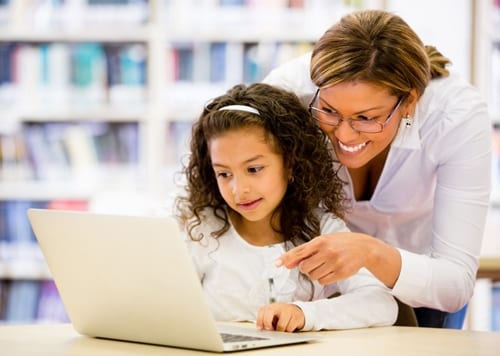
Inside Schools’ Blended Learning Efforts
The nature of education is beginning to change as technology becomes more integral to everyone’s daily activities. Kids these days often have technological prowess engrained in them, as they interact with devices and software on a regular basis from a young age. It’s no secret that the youngest generations will grow to be more tech-savvy than today’s most experienced computer users.
As a result, education is moving closer to the digital realm while maintaining certain aspects of traditional classroom instruction. Blended learning is the practice of integrating face-to-face instruction with online course software. With certain school systems already making the switch, there are several reasons to consider converting your curriculum to a blended learning model.
The benefits of blended learning in schools
Through a study conducted by the U.S. Department of Education, it was determined that students who used Online Training Software performed better in classes than those who only had face-to-face instruction. The results were based on an analysis of 50 different factors related to the effectiveness of online learning, according to the report. Some of these categories were how long each task took to complete, how students communicated with teachers and what kind of knowledge was being tested.
Although elearning / learning management systems proved itself more beneficial than traditional methods of education, the outcome was even more favorable for blended learning programs. Feedback showed that the improved experience was a result of the flexibility of Online Training Software. There was actually more accumulated data on the positive effects of hybrid educational strategies versus purely online classes. The differences weren’t severe but regardless, blended learning meant students could take extra time to gain the skills and use features that aren’t available in a controlled classroom setting to increase comprehension.
The progress of one school district
North Iredell Middle School in North Carolina was awarded a federal grant from the Race to the Top initiative, which is meant to boost innovation in schools around the country. The school system used the grant to transition nine middle schools and seven high schools to hybrid curriculums that use both online education software and classroom instruction. According to TIME magazine, more than 650 students have already been given Macbook Air computers for a $20 technology fee.
Patrick Abele, executive director of the Race to the Top grant, told the source that the focus on innovation goes beyond the actual technology. Instead, the end goal is to foster more effective and engaged teachers who are capable of closing the current education gap.
One clear change the school system has seen is more personalized learning experiences. One student quoted by TIME said she is more motivated to work on school assignments because the laptop makes it more fun.
The importance of faculty commitment
In the North Carolina school system that adopted blended learning, additional staff was hired to make the transition as smooth as possible. According to TIME, 15 full-time blended learning coaches were paired with teachers to help develop digital lesson plans and educate faculty about the ways technology can improve engagement from students.
A factor that plays into how committed teachers are to embracing the new technology is their school system and administration’s dedication to making the switch, eLearning Industry stated. While many teachers prefer to continue teaching the material in ways that have been successful in the past and they are comfortable with, faculty must power through their personal learning curves to reach a knowledge level that is equally as comfortable. Additionally, the teachers should listen to feedback from students to find the right balance of face-to-face and digital interaction.

.svg)








Leave a Reply